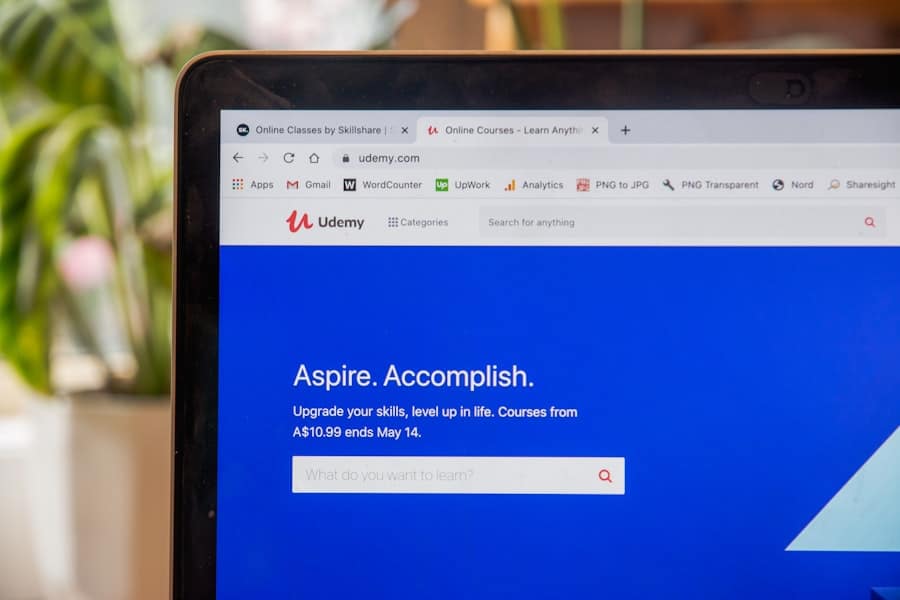The advent of technology has revolutionized various sectors, and education is no exception. Fully immersive virtual campuses represent a significant leap forward in how educational institutions can deliver content and engage students. These campuses utilize advanced technologies such as virtual reality (VR), augmented reality (AR), and mixed reality (MR) to create environments that simulate real-world experiences.
Students can navigate through digital landscapes, interact with 3D models, and participate in collaborative projects, all from the comfort of their homes. This innovative approach to education not only enhances learning but also provides a platform for students to connect with peers and educators in ways that traditional classrooms cannot. The concept of fully immersive virtual campuses is rooted in the idea of experiential learning, where students learn by doing rather than passively receiving information.
By immersing learners in a virtual environment, these campuses can cater to various learning styles and preferences, making education more accessible and engaging. As educational institutions increasingly adopt these technologies, the potential for personalized learning experiences grows, allowing students to progress at their own pace while receiving immediate feedback. This shift towards immersive learning environments is not merely a trend; it represents a fundamental change in how knowledge is imparted and acquired in the 21st century.
Key Takeaways
- Fully immersive virtual campuses offer a new way of experiencing education through virtual reality technology.
- Advantages of fully immersive virtual campuses include accessibility, flexibility, and the ability to create engaging and interactive learning environments.
- Challenges and limitations of fully immersive virtual campuses include the need for expensive technology, potential for isolation, and concerns about the quality of education.
- Fully immersive virtual campuses have the potential to impact traditional education systems by offering alternative learning experiences and reaching a wider audience.
- Technology plays a crucial role in fully immersive virtual campuses, enabling realistic simulations, interactive activities, and seamless communication.
Advantages of Fully Immersive Virtual Campuses
One of the most significant advantages of fully immersive virtual campuses is their ability to provide an interactive and engaging learning experience. Traditional classrooms often rely on lectures and textbooks, which can lead to passive learning. In contrast, virtual campuses allow students to actively participate in their education through simulations, role-playing scenarios, and hands-on activities.
For instance, medical students can practice surgical procedures in a risk-free virtual environment, gaining valuable experience without the potential consequences of real-life mistakes. This level of interactivity not only enhances understanding but also fosters critical thinking and problem-solving skills. Another notable benefit is the flexibility that fully immersive virtual campuses offer.
Students can access course materials and participate in classes from anywhere in the world, breaking down geographical barriers that often limit educational opportunities. This flexibility is particularly advantageous for non-traditional students, such as working professionals or those with family commitments, who may struggle to attend physical classes. Furthermore, virtual campuses can accommodate a diverse range of learners by offering various formats for content delivery, including video lectures, interactive quizzes, and collaborative projects.
This adaptability ensures that all students can find a learning style that suits them best.
Challenges and Limitations of Fully Immersive Virtual Campuses

Despite the numerous advantages, fully immersive virtual campuses also face several challenges and limitations that must be addressed for their successful implementation. One significant concern is the digital divide; not all students have equal access to the necessary technology or high-speed internet required for an immersive experience. This disparity can exacerbate existing inequalities in education, leaving some students at a disadvantage compared to their peers who have access to advanced devices and reliable connectivity.
Educational institutions must find ways to bridge this gap, whether through providing resources or developing alternative solutions that do not rely solely on high-end technology. Another challenge lies in the potential for cognitive overload. While immersive environments can enhance engagement, they can also overwhelm students with information and stimuli.
The richness of a virtual campus may lead to distractions that hinder learning rather than facilitate it. Educators must carefully design these environments to ensure that they promote focus and comprehension rather than confusion. Additionally, there is the issue of training both educators and students to effectively navigate these new platforms.
Without proper guidance and support, users may struggle to adapt to the technology, which could diminish the overall effectiveness of the immersive experience.
Impact on Traditional Education Systems
The rise of fully immersive virtual campuses is poised to significantly impact traditional education systems. As more institutions adopt these technologies, there may be a shift away from conventional teaching methods towards more innovative approaches that prioritize experiential learning. This transformation could lead to a re-evaluation of curricula, with an emphasis on skills that are best taught through immersive experiences, such as collaboration, creativity, and critical thinking.
Traditional assessments may also evolve, moving away from standardized testing towards more dynamic evaluations that reflect a student’s ability to apply knowledge in real-world scenarios. Moreover, the integration of fully immersive virtual campuses could foster greater collaboration between educational institutions and industry partners. As businesses increasingly seek graduates with practical skills and experience, educational programs may align more closely with workforce needs.
Virtual campuses can facilitate partnerships by providing platforms for internships, mentorships, and project-based learning opportunities that connect students with professionals in their fields of interest. This synergy between education and industry not only enhances student employability but also ensures that curricula remain relevant in an ever-changing job market.
The Role of Technology in Fully Immersive Virtual Campuses
Technology serves as the backbone of fully immersive virtual campuses, enabling the creation of rich, interactive environments that enhance learning experiences. Virtual reality headsets, augmented reality applications, and sophisticated software platforms are just a few examples of the tools that facilitate this transformation. These technologies allow educators to design engaging lessons that incorporate multimedia elements such as 3D models, animations, and simulations.
For instance, architecture students can explore virtual buildings they design before they are constructed, gaining insights into spatial relationships and design principles in a way that traditional blueprints cannot provide. Furthermore, advancements in artificial intelligence (AI) are playing an increasingly important role in personalizing the learning experience within virtual campuses. AI algorithms can analyze student performance data to tailor content delivery based on individual needs and preferences.
This level of customization ensures that each learner receives support that aligns with their unique strengths and weaknesses.
Opportunities for Collaboration and Networking

Fully immersive virtual campuses create unique opportunities for collaboration and networking among students, educators, and industry professionals. In traditional educational settings, interactions are often limited to classmates within a single institution or geographic area. However, virtual campuses break down these barriers by allowing students from diverse backgrounds and locations to come together in shared digital spaces.
This diversity enriches discussions and fosters cross-cultural understanding as students collaborate on projects or engage in group activities. Moreover, these virtual environments can host events such as workshops, conferences, and guest lectures featuring industry leaders or experts from around the world. Such events provide students with invaluable networking opportunities that can lead to internships or job placements after graduation.
For example, a virtual campus might host a global hackathon where students collaborate on innovative solutions to real-world problems while connecting with potential employers who are scouting talent. This level of interaction not only enhances the educational experience but also prepares students for the collaborative nature of modern workplaces.
The Future of Learning and Skill Development in Virtual Campuses
As technology continues to evolve, the future of learning within fully immersive virtual campuses appears promising. The integration of emerging technologies such as artificial intelligence, machine learning, and blockchain could further enhance the educational experience by providing personalized pathways for skill development. For instance, AI-driven analytics could identify skill gaps in real-time, allowing educators to adjust curricula dynamically based on student needs or industry trends.
This adaptability ensures that learners are equipped with relevant skills that align with future job markets. Additionally, as remote work becomes increasingly prevalent across various industries, fully immersive virtual campuses will play a crucial role in preparing students for this new landscape. By simulating real-world work environments and fostering collaboration among geographically dispersed teams, these campuses can help students develop essential skills such as communication, teamwork, and adaptability—qualities that are highly sought after by employers today.
The ability to navigate virtual workspaces will become an integral part of professional development as more organizations embrace flexible work arrangements.
Ethical and Social Implications of Fully Immersive Virtual Campuses
The rise of fully immersive virtual campuses also raises important ethical and social implications that warrant careful consideration. One major concern is data privacy; as students engage with these platforms, they generate vast amounts of data regarding their interactions and performance. Educational institutions must ensure that this data is handled responsibly and transparently while safeguarding student privacy rights.
Additionally, there is a risk of exacerbating existing inequalities if access to these technologies remains limited to certain demographics or socioeconomic groups. Furthermore, the potential for social isolation is another critical issue associated with fully immersive virtual campuses. While these environments facilitate connections among peers across distances, they may also lead to a decrease in face-to-face interactions that are vital for developing social skills and emotional intelligence.
Educators must strike a balance between leveraging technology for enhanced learning experiences while promoting opportunities for real-world interactions that foster community building and interpersonal relationships. In conclusion, fully immersive virtual campuses represent a transformative shift in education that offers numerous advantages while also presenting challenges that must be addressed thoughtfully. As technology continues to advance and reshape the educational landscape, it is essential for stakeholders—educators, policymakers, and technologists—to collaborate in creating inclusive environments that prioritize both innovation and equity in learning experiences.

